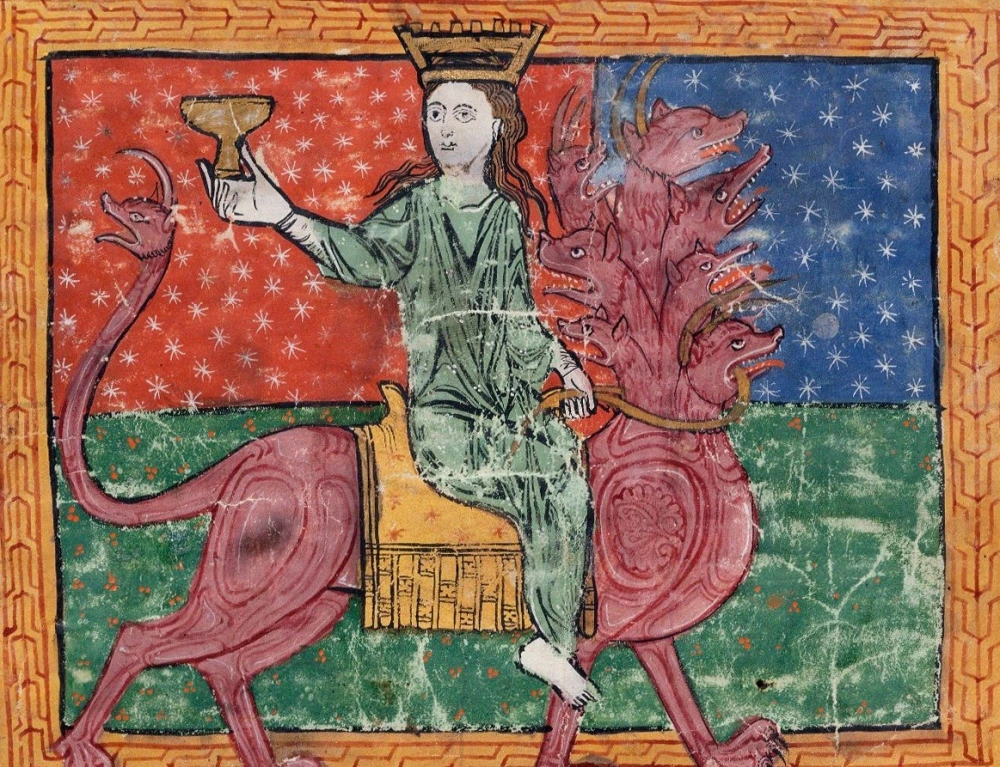Blood symbolism is one of the most important reoccurring symbols in JEM, from Adam on down, as this study explicates. Here, it must be made absolutely clear, blood is understood in its ancestral sense. In the Christ, Adonis and Bacchus Cults it becomes a symbol for the admixing of Semitic and Aryan blood. Of course, this symbolism is continued through the JEM more generally.
Its most salient appearance is in the “Blood Wine” of the last supper. Let us review:
While they were eating, Jesus took bread, spoke a blessing and broke it, and gave it to the disciples, saying, ‘Take and eat; this is My body.’ Then he took the cup, gave thanks gave it to them, saying, ‘Drink from it, all of you. This is My blood of the covenant, which is poured out for many for the forgiveness of sins. I tell you, I will not drink of this fruit of the vine from now until the day I drink it anew with you, in My Father’s Kingdom.’[1]
Again, here we find that the “Blood Wine” is the masculine Semitic element, representing Bacchus, while the “Bread Body,” the feminine Aryan element, representing Kore. Here, again, the Aryan Bread or Flesh and Semitic Wine or Blood are admixed through a ritual consumption.
Importantly, here, the Jew, while understood as the consumer of bread or Aryan flesh, confidentially offers up his own blood for consumption. The twelve apostles, who receive Christ’s blood, have a Zodiacal significance. As this study explicates, they represent, in some manner, the whole of the world and, in particular, “The Twelve Tribes of Israel” or, in large part, the Aryan world. Indeed, with Christ’s “sharing of blood” we see also an ancient Jewish understanding of the dominance of Jewish blood vis-à-vis Aryans. This is the true “Christian conversion.”
Again, to Revelations:
“And I saw [the Whore of Babylon], drunk with the blood of the saints, the blood of the martyrs of Jesus. When I saw her, I marveled greatly. ‘Why are you marveling? I will explain to you the mystery of the woman and of the beast she rides, which has the seven heads and ten horns.” [2]
We already know, through numerology, that the beast symbolizes the Semitic Saturn. Hence we find the Whore of Babylon conjoined with a Jewish lover. In context, they are Mary and Christ, Venus and Bacchus, etc. We now know what it means to be “drunk with the blood of [Jewish] Saints.” This is after all “The Whore of Babylon” we will remember.

Likewise, it seems that in the metaphor of Bacchus and Christ, as wine-blooded Gods, we find an understanding that Bacchus’ sharing of his blood, however harmful to its recipient is harmless to “The Vine,” itself. Here Jewish blood, in a sense, is understood as, beyond the point of harm, fermented, aged or rotted.
Again, with the Christ Myth, certainly the concept of a “Blood Wine” comes especially from Bacchus, the Wine God, even if having earlier precedents. We’ll remember Bacchus was understood as a personification of the grape vine thus his blood, naturally, was the juice of the grape. His blood is wine.
In the myths describing Bacchus, as with Christ, we find stories of Bacchus turning water into wine as well, which likewise we should understand as a reference to interracial admixture. Here the water again, is the feminine Aryan element, while the wine, the infusing Semitic blood.
This motif of turning water to wine, to blood or even to the symbolic color of red is also repeated in the symbolism surrounding the Adonis myth. For instance, the February reddening of The Abraham River or Adonis River in Lebanon, caused by seasonal soil erosion, is understood as depicting the blood of Adonis as it pours from his mortal wound into the river, symbolically the blood stream of the nymphal Aryan Venus.
This motif is repeated as well in the Exodus story. In an effort to punish the Pharaoh, Aaron turn’s the Nile to blood in the Exodus story through use of his rod, killing as well all the fish that inhabit it. Here again the rod is a clear phallic symbol. The fish are almost certainly intended as symbols of Aryan genetic stock as this study explicates.
These matters are discussed here:
[1] Matthew 26:26 – 26:29
[2] Revelation 17:6- 17:7
[3] The first sense we ascribe to intoxicate is “to inebriate” but it may also mean “to poison.” It comes from the Medieval Latin intoxicāre “to posion” and the Latin toxicum or “posion.”
6 thoughts on ““Blood Magic” and Wine”